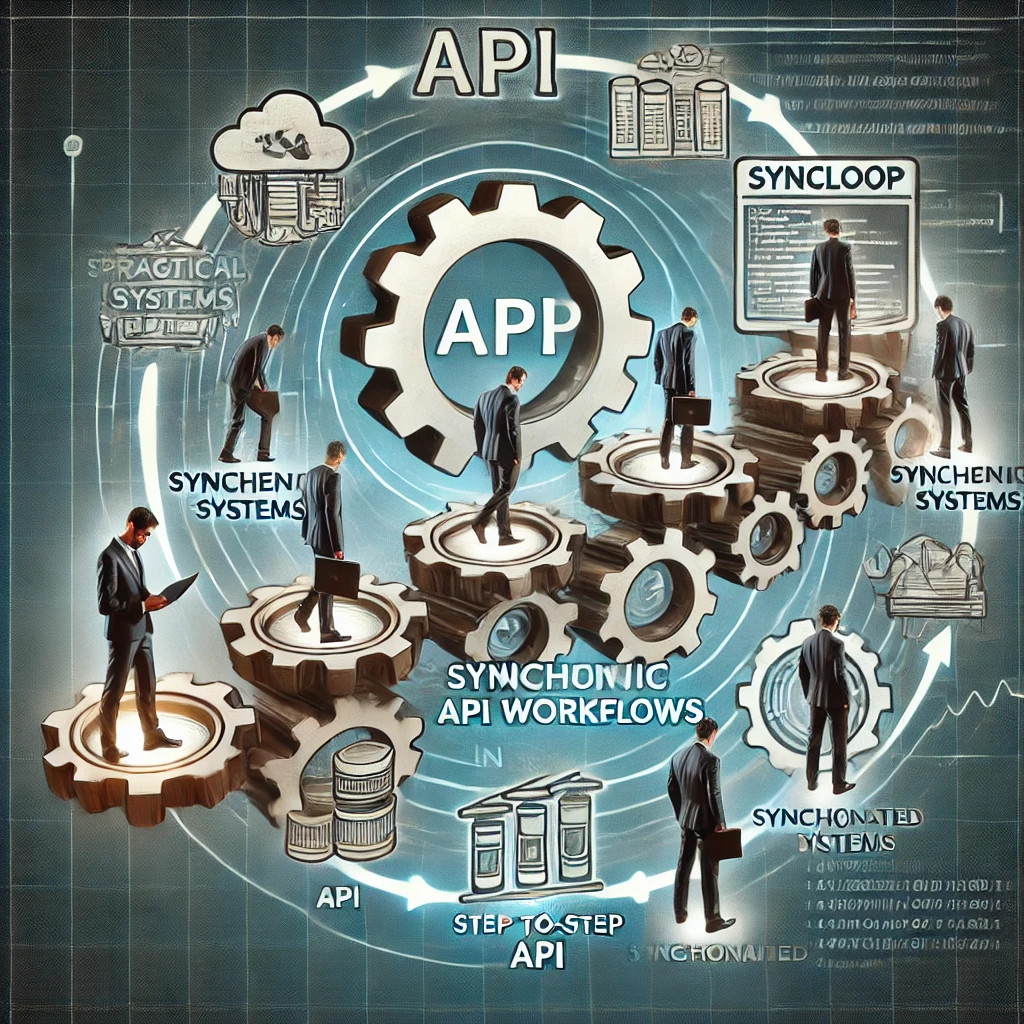A Practical Guide to Synchronous API Workflows in Syncloop

This guide explores the principles of synchronous API workflows, how Syncloop supports their implementation, and best practices for ensuring performance and reliability.
Understanding Synchronous API Workflows
What are Synchronous API Workflows?
Synchronous workflows are processes where each step waits for a response from the API before proceeding. This "request-response" mechanism ensures:
- Immediate Feedback: Provides users or systems with instant results.
- Logical Flow: Maintains a sequential process for tasks that depend on previous results.
- Transaction Safety: Ensures data consistency in sensitive operations.
Key Use Cases
- User Authentication: Validating credentials during login.
- Payment Processing: Authorizing and confirming transactions.
- Data Queries: Fetching records from databases or APIs.
Challenges in Synchronous API Workflows
- Latency: Delays in response can disrupt user experience.
- Scalability: Handling high concurrent requests without degrading performance.
- Error Handling: Managing failures or timeouts effectively.
- Dependency Management: Ensuring upstream or downstream services are responsive.
How Syncloop Facilitates Synchronous API Workflows
1. Low-Latency APIs
Syncloop optimizes API performance to ensure low response times.
- Features:
- High-speed routing for synchronous API calls.
- Real-time monitoring of latency metrics.
- Benefits:
- Reduces delays for better user experiences.
- Ensures responsiveness for time-critical applications.
- Use Case: Processing credit card payments during online shopping.
2. Dynamic Scalability
Syncloop handles variable traffic efficiently to maintain workflow stability.
- Features:
- Auto-scaling to accommodate surges in synchronous requests.
- Load balancing for distributing traffic across servers.
- Benefits:
- Prevents service degradation during high demand.
- Ensures consistent performance for all users.
- Use Case: Scaling login APIs during a product launch.
3. Integrated Error Handling
Syncloop provides tools to manage failures and retries seamlessly.
- Features:
- Configurable retry policies for failed API calls.
- Timeout settings to prevent indefinite waits.
- Benefits:
- Improves workflow reliability during transient errors.
- Prevents cascading failures in dependent processes.
- Use Case: Retrying failed database queries in a ticket booking system.
4. API Orchestration
Syncloop simplifies the coordination of multiple synchronous API calls.
- Features:
- Conditional logic for sequential workflows.
- Support for complex dependency chains.
- Benefits:
- Reduces development complexity for multi-step workflows.
- Ensures logical consistency across tasks.
- Use Case: Orchestrating data retrieval from multiple APIs for a dashboard.
5. Real-Time Monitoring
Syncloop offers visibility into the performance of synchronous workflows.
- Features:
- Dashboards for tracking API response times and error rates.
- Alerts for anomalies in workflow execution.
- Benefits:
- Enables proactive resolution of performance issues.
- Optimizes API configurations for better outcomes.
- Use Case: Monitoring API health in a financial application.
6. Secure API Communication
Syncloop enforces strong security measures for synchronous workflows.
- Features:
- End-to-end encryption for secure data transmission.
- Role-based access control (RBAC) for managing API permissions.
- Benefits:
- Protects sensitive data during synchronous operations.
- Ensures compliance with security standards.
- Use Case: Securing API communication for healthcare systems.
Benefits of Synchronous API Workflows with Syncloop
1. Improved Reliability
Handles API dependencies and failures effectively.
2. Enhanced Scalability
Manages increasing synchronous requests without compromising performance.
3. Faster Response Times
Reduces latency to improve user satisfaction.
4. Robust Security
Protects data integrity and privacy during synchronous operations.
5. Simplified Development
Provides tools and templates for designing efficient workflows.
Best Practices for Synchronous API Workflows
- Minimize Latency: Optimize API configurations to ensure fast response times.
- Plan for Scalability: Use auto-scaling and load balancing to handle surges.
- Implement Timeouts: Define limits to avoid indefinite waits.
- Leverage Monitoring Tools: Track metrics to identify and resolve bottlenecks.
- Secure Communication: Use encryption and access controls to protect data.
Real-World Applications
1. E-Commerce
- Use Case: Validating promo codes and calculating discounts in real time.
- Benefit: Enhances customer experience during checkout.
2. Banking
- Use Case: Processing fund transfers and providing instant confirmations.
- Benefit: Builds trust and ensures transaction safety.
3. Healthcare
- Use Case: Retrieving patient records instantly during consultations.
- Benefit: Improves efficiency and patient care.
4. Travel
- Use Case: Confirming flight bookings and issuing tickets.
- Benefit: Reduces user wait times and booking errors.
5. SaaS Platforms
- Use Case: Authenticating users during login or API access.
- Benefit: Provides a seamless onboarding experience.
Future Innovations with Syncloop
Syncloop is advancing its platform to enhance synchronous workflows with:
- AI-Driven Optimization: Reducing latency and optimizing request routing.
- Edge Computing Integration: Processing requests closer to users for faster responses.
- Workflow Analytics: Providing deeper insights into workflow efficiency.
Conclusion
Synchronous API workflows are essential for applications requiring real-time responses and sequential task execution. Syncloop simplifies their implementation with tools for scalability, error handling, security, and monitoring. By leveraging Syncloop, businesses can build reliable, efficient, and secure synchronous workflows, ensuring optimal performance and user satisfaction.
An illustration showcasing Syncloop-powered synchronous API workflows, emphasizing low latency, error handling, and real-time monitoring for seamless operations.
Back to Blogs